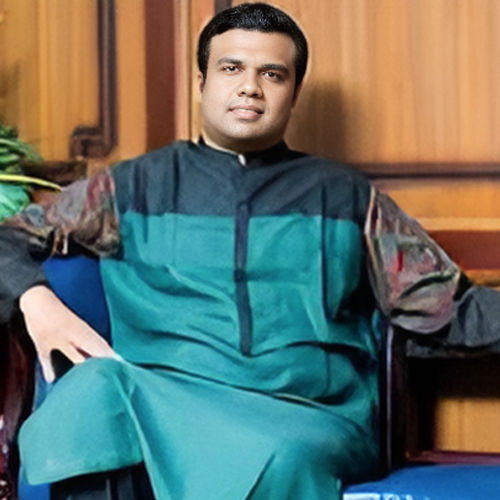


Sailesh Singhania
Fashion Designer & Owner
Sailesh Singhania Label
Kanjeevaram, jamdani & Patan patolas gaining popularity
The Sailesh Singhania label was created to promote handwoven sarees and apparel with a unique sense of aesthetics for discerning customers through the formation of the Sailesh Singhania Design House. The label works with 700 handloom weavers throughout the year and supports 22 different clusters including Pochampally, Gadwal, Uppada, Kota, Pranpur and many more. Fibre2Fashion spoke to fashion designer and owner Sailesh Singhania about how handlooms stood the test of time and his long association with handwoven sarees.
Fibre2Fashion : Tell us a little bit about your association with handlooms. Did you always plan to get into the family business? What fascinates you the most about handlooms?
Sailesh Singhania:
I have grown up surrounded by unique and beautiful fabrics and textiles which piqued my interest in fashion, but as I grew up the process and history behind the technique of handweaving fascinated me further and that's when I started working on reviving the beautiful yet dying craft of handweaving.
Fibre2Fashion : Do you remember the first time you developed a handwoven sari with a weaver?
Sailesh Singhania:
The first handwoven saree I had developed was a pochampally saree. I was very excited and tried making several variations, but every variation I tried the weaver had his limitation and denied it all! The first saree itself taught me that as far as the journey I had decided on was concerned, the path would not be easy-but I am someone who loves challenges.
Fibre2Fashion : Your great grandfather was the textile ministers in the Nizam's cabinet. What kind of exquisite textiles had the Singhanias created for the royalty then?
Sailesh Singhania:
My grandfather would import the textiles for the Nizam from Japan. Back in those days there used to be rationing on textile manufacturing; so, most textiles were imported from Japan.
Fibre2Fashion : Which traditions have stayed with Sailesh Singhania, and what are your new ones?
Sailesh Singhania:
The Singhanias have always believed in delivering the best quality and even today we believe in providing the best and never compromise on quality. We at Singhanias try to contemporise the traditional weaves by adding unique and quirky motifs like teacups on a banarasi or hot air balloons on a traditional jamdani.
Fibre2Fashion : How many weavers did your family work with then? How many are you working with today?
Sailesh Singhania:
Back in those days, my grandfather would travel to Japan and source fabrics and distribute those among the people of the state. Today, we are working with 22 clusters across the country: Pranpur , Cholapur, Pochampally, Srikakulam, Gadwal, Upadda and Kota to name a few. It takes anywhere from three months to a year for a saree to get off the loom.
Fibre2Fashion : What are the challenges of keeping an age-old heritage alive in the time of fast fashion?
Sailesh Singhania:
Fibre2Fashion : Which are the most popular weaves today?
Sailesh Singhania:
Weaves such as kanjeevaram, jamdani and Patan patolas are gaining popularity among saree wearers.
Fibre2Fashion : How many collections do you come up with?
Sailesh Singhania:
We come up with two collections in a year-spring/summer and autumn/winter, and each collection comprises 25-30 exclusive handwoven sarees.
Fibre2Fashion : Who are your major clients? How many custom orders do you get?
Sailesh Singhania:
The major clients are those who understand and know the value of a handwoven saree or heritage handloom piece. We take a couple of custom orders for those clients for whom time isn't a barrier.
Fibre2Fashion : Making handloom sarees take time. How do you justify the costs associated and earn your profits?
Sailesh Singhania:
We have been working on fixed margins as we have to give work to the weavers throughout the year. The value of handmade products can never be justified by cost, but price plays an important role and we consider the time and raw material consumed in manufacturing a saree to provide its value.
Fibre2Fashion : Are you partnering with any international fashion house/ platform in order to promote Indian handloom sarees?
Sailesh Singhania:
At present we have not collaborated with any, but we are open to partnering if offers come in.
Fibre2Fashion : What do you have to say about the market potential of handloom sarees?
Sailesh Singhania:
It is great to see that a lot of awareness has been created these days and with an increase in awareness there has been an increase in demand of this dying craft.
Fibre2Fashion : From a designer perspective, what initiatives should be taken by Indian designers to revive handlooms?
Sailesh Singhania:
I feel an increase in usage of natural yarns, handloom fabrics and sustainable and eco-friendly fabrics will help revive the handloom industry. (HO)